by Shimizu Minoru
Influenced by the Lehman shock of September 2008, 2009 was in many respects an inward-looking, backward-looking year for the art world, which became more conservative to match the period of recession in which money was hardly moving at all. Japan’s bubble economy is said to have lasted from 1986 to 1991. Phenomena such as Dump-Type and Japanese Neo-Pop that appeared in and around 1990 could probably be described – and I don’t mean this in a negative sense – as products of the atmosphere created by the bubble society. And while the artists in the so-called Group 1965 who shot to preeminence from the mid-1990s onwards had a sensibility that enabled them to appreciate the harsh reality of regional, impoverished Japan that was in contrast to the cosmopolitanism of Neo-Pop/Neo-Geo, it could be said that they were the first to respond to the collapse of the bubble economy and the ‘lost decade’ that followed. The so-called dot-com bubble sprang up on the cusp of the millennium, the recession bottoming out in January 2002 and the economy supposedly entering a period of gradual recovery coinciding with the restructuring of Japanese society (the ‘gentle heat-haze economy’ of the 14th business cycle) that lasted up until around October 2007. The sentiment exemplified by the Group 1965, in which local sensibilities dovetailed with the internationalism of the same era, combined with the concreteness of this period, leading to the emergence beginning with Nara Yoshitomo in 1995 of the artists who belong to what Matsui Midori dubbed the Micropop generation and later to the artists who belong to what was described in a feature in Bijutsu Techo as the Zero Zero Generation, a phenomena that paralleled this restructuring and economic recovery. Two thousand and seven’s The Door into Summer: The Age of Micropop exhibition (Art Tower Mito), which was curated by Matsui, was also an excellent documentation of Japanese contemporary art over the previous ten years. Today, one year on from the financial crisis that hit a year after that exhibition, several of the artists of that generation have lost their representation or switched to new galleries, both Studio Voice and Esquire Japan have ceased publication, and at art fairs, increasingly conservative collectors are looking to invest stably in big-brand artists from the 1990s (which is the disappointing reason why transactions reached record levels at Art Basel) and conspicuously refraining from purchasing work by Zero Zero Generation artists whose prices have only increased slightly. Given this environment, it is perhaps only natural that the exhibitions held at the beginning of summer, including neoteny japan (The Ueno Royal Museum) and Winter Garden: The Exploration of the Micropop Imagination in Contemporary Japanese Art (Hara Museum of Contemporary Art), looked strangely old-fashioned.
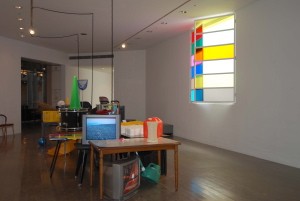
Tanaka Koki installation at Contmporary Art Center, Art Tower Mito
The Door into Summer: The Age of Micropop 2007
Courtesy Tanaka Koki and Aoyama | Meguro
Photo courtesy Contemporary Art Center, Art Tower Mito
The ‘inward-looking, backward-looking’ gaze is directed at already established local artists and (via works in museum collections and borrowed works) at education in art history. Examples of the focus on local artists include Sugimoto Hiroshi’s History of History (National Museum of Art, Osaka [NMAO]: the artist being the only reason why it was more successful than when shown at the 21st Century Museum of Contemporary Art, Kanazawa); Ikeda Ryoji’s +/- (Museum of Contemporary Art Tokyo [MOT]: an old, out-of-date aesthetic as if clocks had stopped in the 1980s); Kitajima Keizo’s 1975-1991 (Tokyo Metropolitan Museum of Photography [Syabi]: all the consistency of a formalist in pursuit of the ‘real’ from Okinawa’s return through to the collapse of the Soviet Union); Nagasawa Hidetoshi’s Dove Tende Aurora (NMAO: overly formal, unctuous commentaries on the artworks that treated the audience like monkeys); and Tomatsu Shomei’s Hues and Textures of Nagasaki (Nagasaki Prefectural Art Museum: see my column). There are never too many or too few exhibitions by artists of medium standing, which is a trend that should be welcomed, but in the end (although this doesn’t apply in all cases) it’s the planning that is inward-looking and backward-looking, as a result of which there is a lack of verification and scrutiny of the works, leading to exhibitions that are nothing but haphazard introductions to the artists that are neither fresh assessments nor reassessments. Of course, if one surveys enough work by an artist, their essence will in its own way be revealed, so the viewer can always make up for the insufficiencies in planning. As for refresher training and education in art history, typical examples include Collage: Creation by Severance and Reconstruction (The National Museum of Modern Art, Tokyo [MOMAT]), and Waiting for Video: Works from the 1960s to Today (also MOMAT). Here, too, because critical questions such as “Is this really interesting when viewed today?” and “If so, what aspects of it are interesting?” don’t extend to the historical and institutional authority of the works on exhibit, they are not free from the tediousness of mediocre academism.
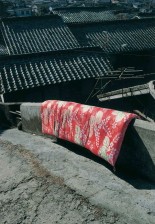
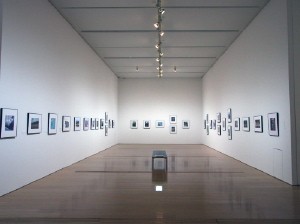
Left: Installation view of Shomei Tomatsu: Hues and Textures of Nagasaki Nagasaki Prefectural Art Museum, 2009
Right: Taking a Walk around the City, Kannai-machi, Nagasaki City. 1982, © Shomei Tomatsu
The description ‘inward-looking, backward-looking’ holds true not only of exhibitions but also of the style adopted by artists whether newcomers or veterans, although this is not necessarily a trend that should be criticized. In short, this is the ‘reorganization of contemporary art history’, or in other words the trend towards the pluralisation of the history of contemporary art, and towards developing anew the latent potential within art from the past that remained undeveloped at the time. Unlike appropriation, which is premised on established identities in art history, this trend takes as its essence the freedom to firstly connect with elements that have spilled down from this kind of uniformity and discover independently freshness in the classics, and so normally it is not premised on anything. Certainly, there is only a fine line between this and the officiousness of educating authoritatively on hardcore modernism, the danger of inviting meaningless tongue wagging by art historians, and the worst kind of anachronistic modern art, but it should be clear from looking at the artworks themselves that basically they are unelated. For example, one of the more noticeable trends is collage (the above-mentioned exhibition was well-timed). Examples include William Kentridge’s What We See & What We Know: Thinking About History While Walking, and Thus the Drawings Began to Move… (The National Museum of Modern Art, Kyoto [MoMAK]: swept away the existing image and ushered in a new problem sphere in the form of collage in the digital era); Varda Caivano’s The Inner Me (Tomio Koyama Gallery Kyoto: enough to reassure one that painting is after all interesting at a time when many artists are offering things that are passed their use-by date); Kimura Yuki’s Year 1940 was a leap year starting on Monday (Taka Ishii Gallery: a photo installation by an artist who’s really been on a roll in recent years), and Okazaki Kenjiro’s Special feature: Kenjiro Okazaki (MOT: to be understood not in the framework of a retrospective but in the context of this current trend).
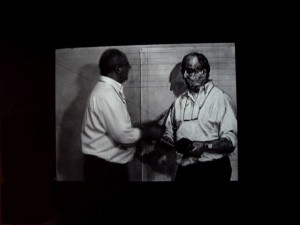
William Kentridge: What We See & What We Know:
Thinking About History While Walking, and Thus the Drawings Began to Move…
The National Museum of Modern Art, Kyoto [MoMAK]
The final factor distinguishing 2009 is ‘China’. One only need to look at AVANT-GARDE CHINA: 20 Years of Chinese Contemporary Art (NMAO) at the year’s start, Ai Weiwei’s According to What? (Mori Art Museum), and the ShContemporary Shanghai Art Fair, which surpassed Art Fair Tokyo in terms of infrastructure and organization, to realize that Chinese contemporary art is going through the equivalent of the post-bubble period in Japan from the Group 1965 through to Nara Yoshitomo. Chinese contemporary art, which hardly felt the effects of the Lehman shock and is still on a rising trend, will no doubt shortly produce its own version of Micropop, at which stage things will really start to become interesting, as given the strength of the Chinese contemporary art in terms of infrastructure, it should severely relativize its Japanese counterpart.
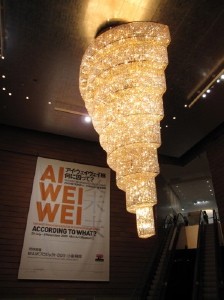
Ai Weiwei Chandelier 2009
Glass crystals, lights, metal 600×450×225cm
Installation view at Ai Weiwei: According to What?
Photo Watanabe Osamu, Courtesy Mori Art Museum
←Back to Index “Feature: Contemporary art in 2009 and 2010”
